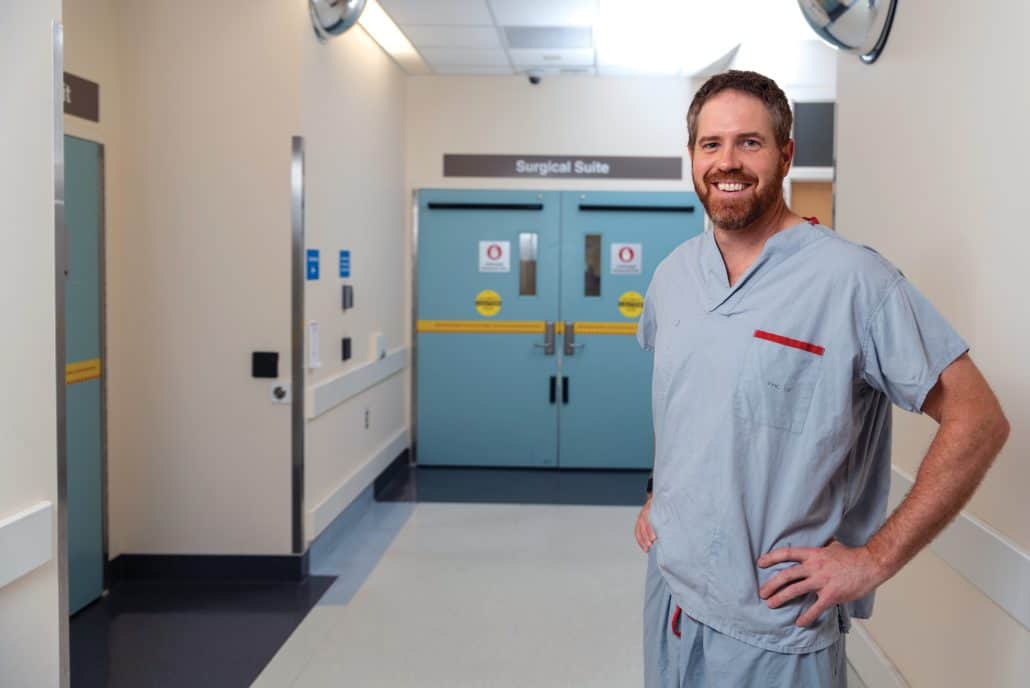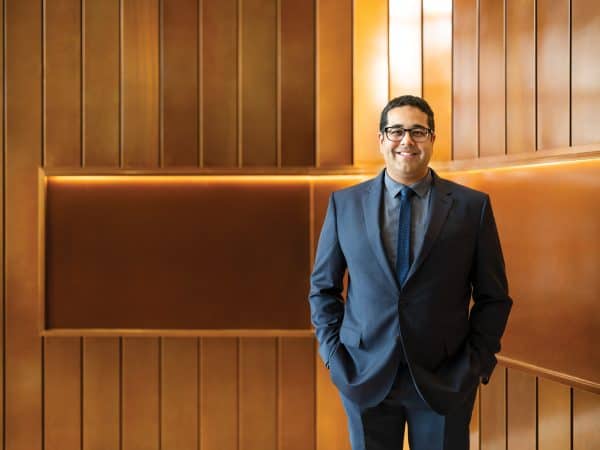Through the support of grants and donors, Dr. Michael Monument rewrites Calgary’s role in identifying new therapies to treat sarcoma.
By Elizabeth Chorney-Booth

When Dr. Michael Monument returned to his hometown of Calgary in 2014 after a fellowship at the University of Utah, colleagues warned him that the city might not be the best place for him to pursue his interest in sarcoma research. Sarcoma (a relatively rare type of bone or soft tissue tumour that disproportionately affects younger patients) wasn’t a research specialty at the University of Calgary at the time. But Monument was determined to change that narrative. With the help of donations and community support, Monument built and became program director of the Integrated Sarcoma Research Program (iSARP) at the University of Calgary, a multidisciplinary, team-based centre of excellence that provides hope for those affected by sarcoma.
Sarcoma does not typically respond to chemotherapy and must be removed with surgery, which can permanently alter a patient’s quality of life. If the surgery is not successful, life expectancy becomes extremely limited. The 40-plus members of the iSARP team work to develop new treatment options through initiatives including mice models and genomic sequencing. That sequencing creates what Monument calls a “molecular fingerprint” helping identify effective treatments unique to each patient.
“These are the early necessary steps to develop a precision oncology program,” Monument says. “The molecular readout can help identify certain drugs that have a high probability of working.”
Strategic giving makes all the difference.
These game-changing breakthroughs can only happen through successful fundraising. iSARP has received critical grants from organizations like the Alberta Cancer Foundation to build the infrastructure needed to facilitate its work. In particular, it’s because of strategic giving from donors like Ron Daye of Rangeland Engineering and Rob Pearson to the Foundation that iSARP has come to fruition.
“In 2014, our sarcoma program was all clinicians,” says Monument. “Fast forward to 2025. We have expanded the clinical program and grown a sarcoma-focused research program, including PhD scientists, highly qualified personnel and research students.” The expansion of iSARP from a team of 10 clinicians to more than 40 multidisciplinary members would not have been possible without strategic donor support through the Alberta Cancer Foundation.
As Monument and his colleagues begin to identify specific therapies to better treat sarcoma, those drugs will become more readily available for clinical trials or partnerships with pharmaceutical companies, improving outcomes for patients who previously would have had to rely entirely on surgery. Though Calgary wasn’t an epicentre for sarcoma research when Monument began his work, iSARP is now well on its way to finding potential cures thanks to the generosity of its donors.
“We’ve really grown this program in the span of a decade,” Monument says. “We’ve gone from a very small centre of good clinical sarcoma care to one that’s integrated that care with cutting-edge research, education and training.”

